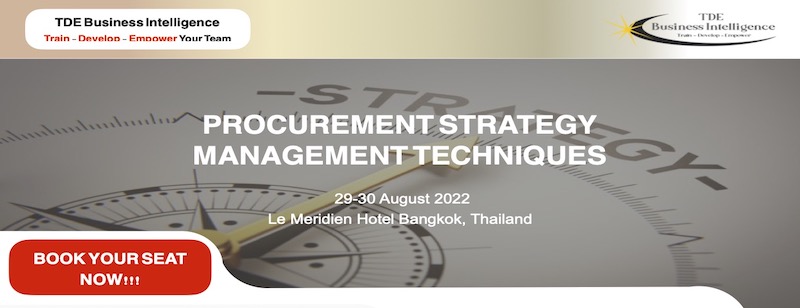
INTRODUCTION
The procurement function has developed from a simple administrative function to a fully-fledged strategic business unit. No longer is it sufficient to simply turn requisitions into orders and then await the delivery of the goods or services. It is therefore imperative for procurement to constantly deliver value to the organization by delivering products and services that contribute to the well-being of the organization.
This course discusses procurement at the strategic level. The course offers a business-wide view of procurement through discussing its role, importance, and integration within other departments. The course also discusses various strategic procurement decisions along with the best practices to be used to ensure an efficient process. Performance measurement is also emphasized as a way to meet and exceed the pressures of globalization and the steadily increasing customer expectations.
BENEFITS OF ATTENDING
By the end of the course, participants will:
- Have a greater ability to lead, plan, and manage the procurement process.
- Understand different sourcing strategies and know how to select the right suppliers.
- Understand how to have a strong contact with suppliers.
- Understand how to monitor the procurement process by selecting the right KPIs.
- Be aware of utilize technology and use digitization in procurement.
- Learn techniques to manage procurement more efficiently (e.g., using the lean philosophy).
WHO SHOULD ATTEND?
Middle to senior management from the procurement department, contracting, purchasing, and other personnel who may be involved in the planning of purchases and contracts.
COURSE OUTLINE
Introduction to Procurement
- Value creation in the supply chain
- Seven “rights” of supply chain management
- Supply chain planning and control activities
- The role and objectives of procurement in the organization
- Types of purchases
- Procurement stakeholders
- Price of goods/services (total cost of ownership)
- An overview of the procurement process
Procurement Strategy and Planning
- Using strategy to set priorities and make decisions
- Procurement strategy
- Ordering approaches
- Procurement planning
- Insourcing and outsourcing (make or buy)
- Performance indicators for procurement
- IT systems and the utilization of technology and digitization
- Policies and procedures
- Staffing the procurement department
Supplier Relationship
- Supply strategy selection
- Supplier alliances and partnerships
- Strategic sourcing and tactical buying
- Supply alternatives
- Tendering process
- Supplier selection criteria, rating, and ranking
- Negotiation
Contract Management
- Scope of contract management
- Elements and conditions of a contract
- Contracting approaches
- Contract types
Supply Disruptions
- Supply risk
- Contingency planning
Lean and Continuous Improvement
- Lean principles
- Value versus waste
- Continuous improvement principles
- The pull system
- Lean tools and techniques (Pareto, cause-and-effect, value stream mapping, 5S, etc.)
